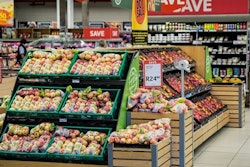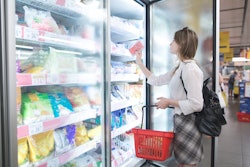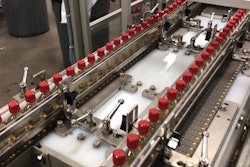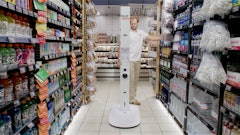
The Coronavirus disease (COVID-19) pandemic caused major supply chain disruption challenges across the world, particularly for those within the food and beverage industry. Changes in consumer buying patterns made demand planning incredibly difficult and some products experienced unforeseen shortages or surpluses. Companies had to adapt to growing carrier pricing changes and volume restrictions and limitations, while some were forced to quickly develop omnichannel shopping experiences and multi-vendor strategies.
Now, almost a year since the start of the pandemic, we can look back on how the challenges the food and beverage industry faced accelerated the digital transformation journeys of many companies in the space, and as a result, have set them up for a successful 2021.
E-commerce grew during the pandemic, and so did the challenges
The widespread COVID-19 lockdowns in the United States at the start of 2020 drastically increased the already growing demand for omnichannel experiences. Those businesses not already equipped to manage multiple sales channels struggled to manage the trend of going direct-to-consumer as well as the shift by consumers to food consumption at home, rather than restaurant dining.
The growth in e-commerce also put greater pressure on shipment channels, leading to increased shipping costs. Customers were not always willing to pay premium shipping fees for low-priced items and so many businesses were forced to absorb these fees, cutting into their profits.
In addition, carrier limits for how many packages can be picked up each day were implemented by many shipping companies. This problem was only compounded for those food and beverage companies that rely on a single carrier for shipments. To address this challenge, businesses needed to integrate multiple carriers into their network so they could achieve the flexibility they needed when faced with carrier limitations and changing shipping costs.
The importance of local and multi-vendor strategies was highlighted
In addition to using multiple carriers, more businesses started utilizing multiple vendors. Food and beverage companies had to quickly respond to changes in supply and demand, particularly as manufacturers looked to source more raw materials locally. Local and regional supply chains require more players, increasing complexity and costs, but overall allows for more control over inventory and moves the product closer to the end consumer. Many companies have successfully improved their supply chain resiliency by revisiting their sourcing strategies to source ingredients from multiple vendors instead of relying on just one.
More resilience was gained to take on the second wave
According to Adobe data, in April 2020, online grocery shopping grew by 110% in daily online sales compared to the previous year. Many food and beverage companies continue to face carrier limitations and shipping costs, and have been forced to integrate omnichannel sales experiences, as well as multi-vendor and multi-carrier strategies. However, many in the industry have addressed these challenges through the application of technology that provides seamless access to historical and financial data, omnichannel support like e-commerce to B2C and electronic data interchange (EDI) to B2B.
Historical data can be used to analyze vendor performance, price and quality, enabling businesses to effectively revisit their sourcing strategies and mitigate risks of supply chain disruption – it can help master the second wave of the pandemic with data from the first wave. And, financial data can be used to evaluate the expenses associated with materials, production and shipping, as well as the margins achieved, particularly as firms look to rationalize their product ranges.
The challenges of the pandemic led to changes in strategy and process for food and beverage companies. Luckily for many in the food and beverage space, it also strengthened their positions and allowed them to become more resilient to future disruptions that the New Year may bring.




















